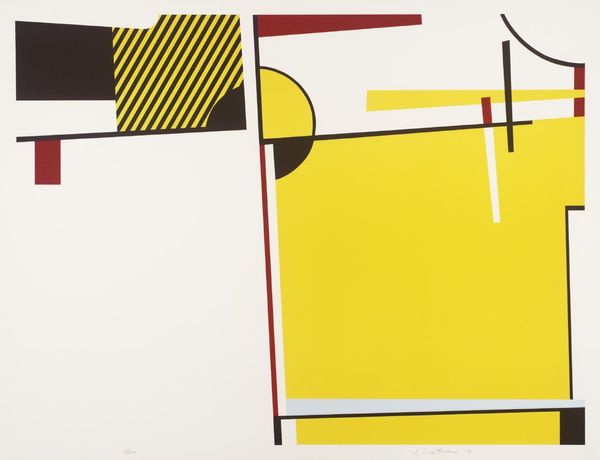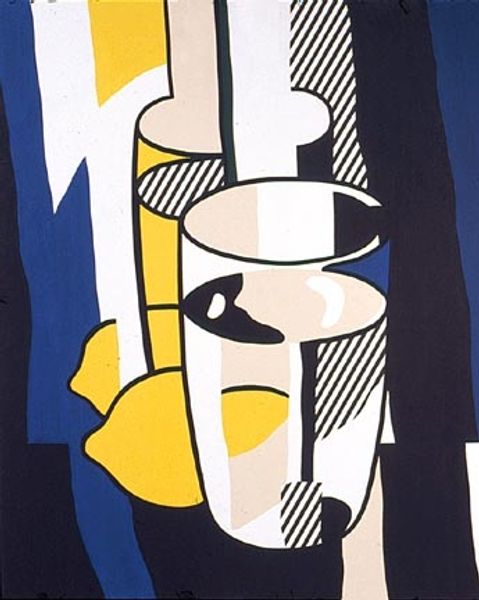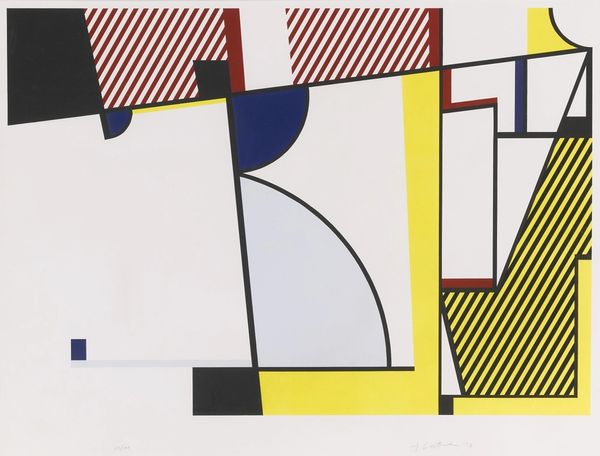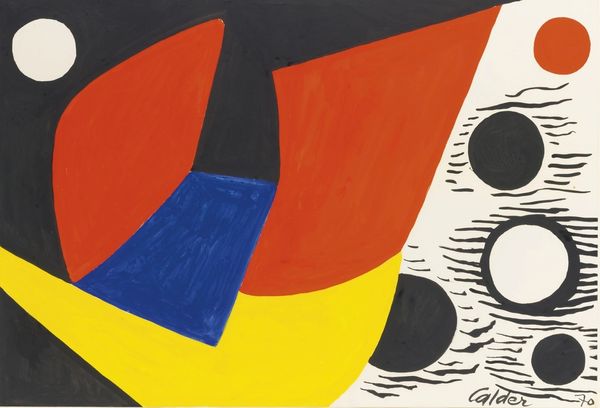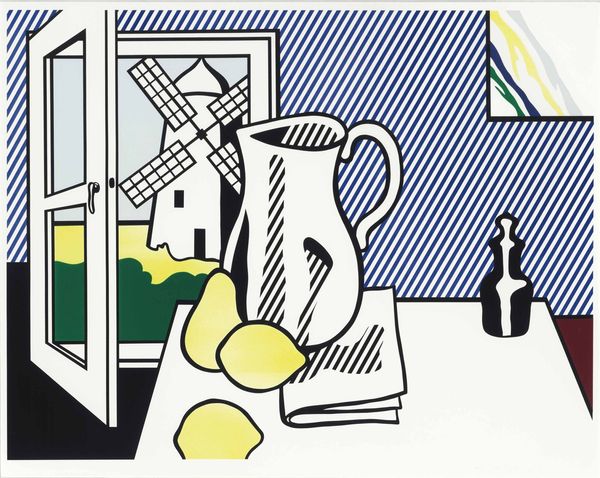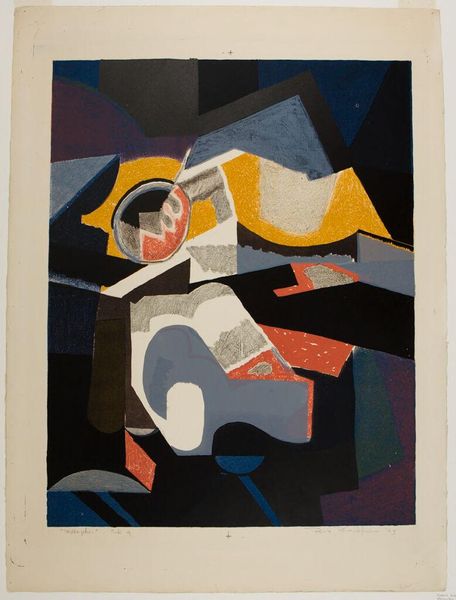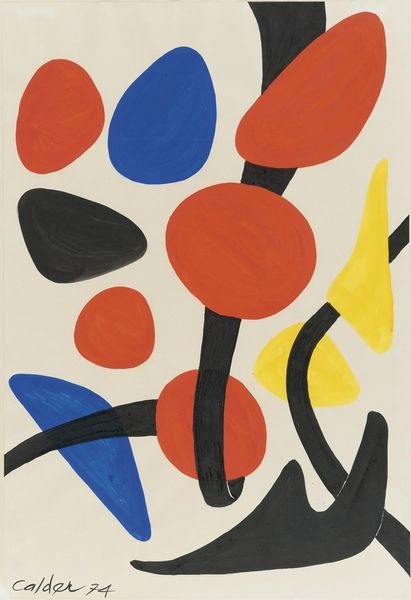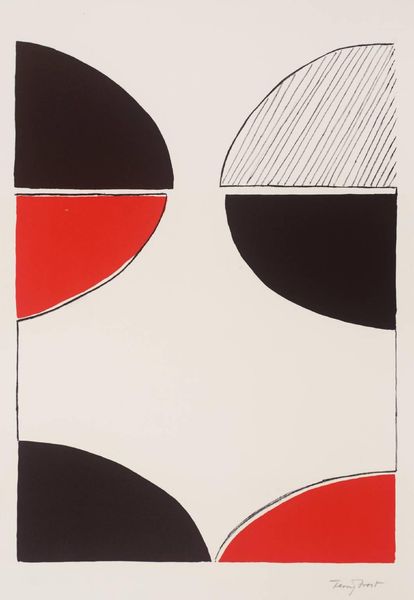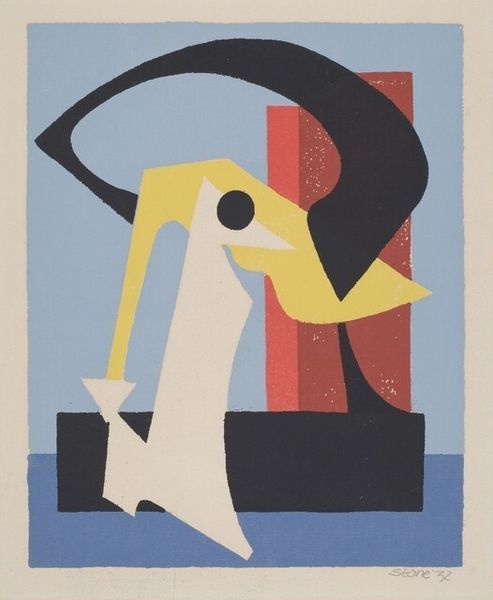
Copyright: Modern Artists: Artvee
Curator: This print, "Before the Mirror" by Roy Lichtenstein, dates to 1975. It embodies the Pop Art movement. Editor: Bold, isn't it? Almost aggressively flat. The interplay of those primary colours—yellow, blue, black, white—really snaps the composition into focus, yet distorts it at the same time. It’s a still life, but not really. Curator: The interesting thing is, it engages in a dialogue with art history itself. The "mirror" isn’t a mirror at all. We see through it to flat patterns and geometric forms that reference cubism and the modern obsession with mechanical reproduction. Editor: Absolutely. Lichtenstein reduces the still life to graphic elements—stark lines, solid fields of colour, Ben-Day dots that imply volume but are ultimately flat. The texture becomes surface, deliberately undermining any illusionistic depth. It's very self-aware. Curator: And that awareness comments on how mass media images began to be consumed at that time, and their relationship to the consumer. The simplification almost mirrors how images can lose complexity through the consumption and reproduction in magazines and commercial advertisements. Editor: You know, the flattening also emphasizes the artificiality, the manufactured nature of the scene. The choice of basic geometric forms – it recalls the work of artists who explored the essence of form and the mechanics of representation. Stripped bare, these are glasses of water and fruit transformed into pure visual stimulus. Curator: I see it connecting more directly to larger cultural shifts during the '70s—questioning originality, embracing the manufactured image, exploring how Pop Art both reflected and critiqued a society increasingly defined by consumer culture. It made viewers consider the image making enterprise they were becoming reliant on. Editor: Fair enough, although to me it's most engaging as a study of pictorial mechanics, or should I say, mechanics of pictures. It pulls you into a dialogue with the image itself. Curator: I agree. By prompting us to rethink our ideas surrounding still life, "Before the Mirror" gives the viewer insight to the growing importance of commodified and consumed visual materials at that time. Editor: Ultimately, this still life, like other works from this series, embodies art stripped to its bones as pure aesthetic. A lasting echo.
Comments
No comments
Be the first to comment and join the conversation on the ultimate creative platform.

